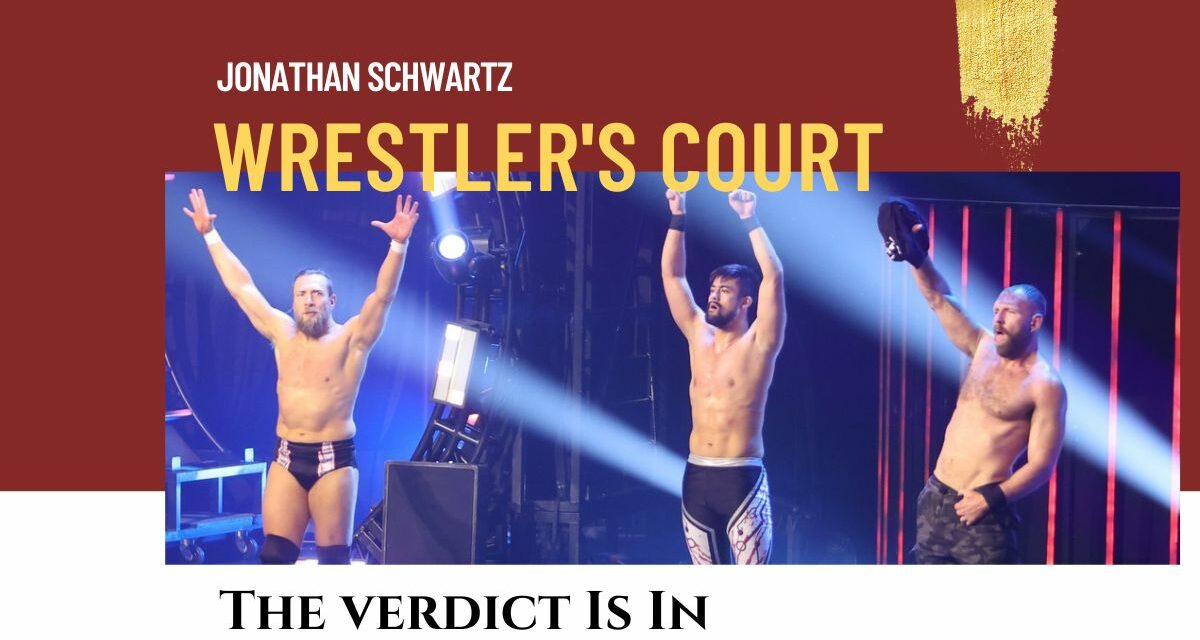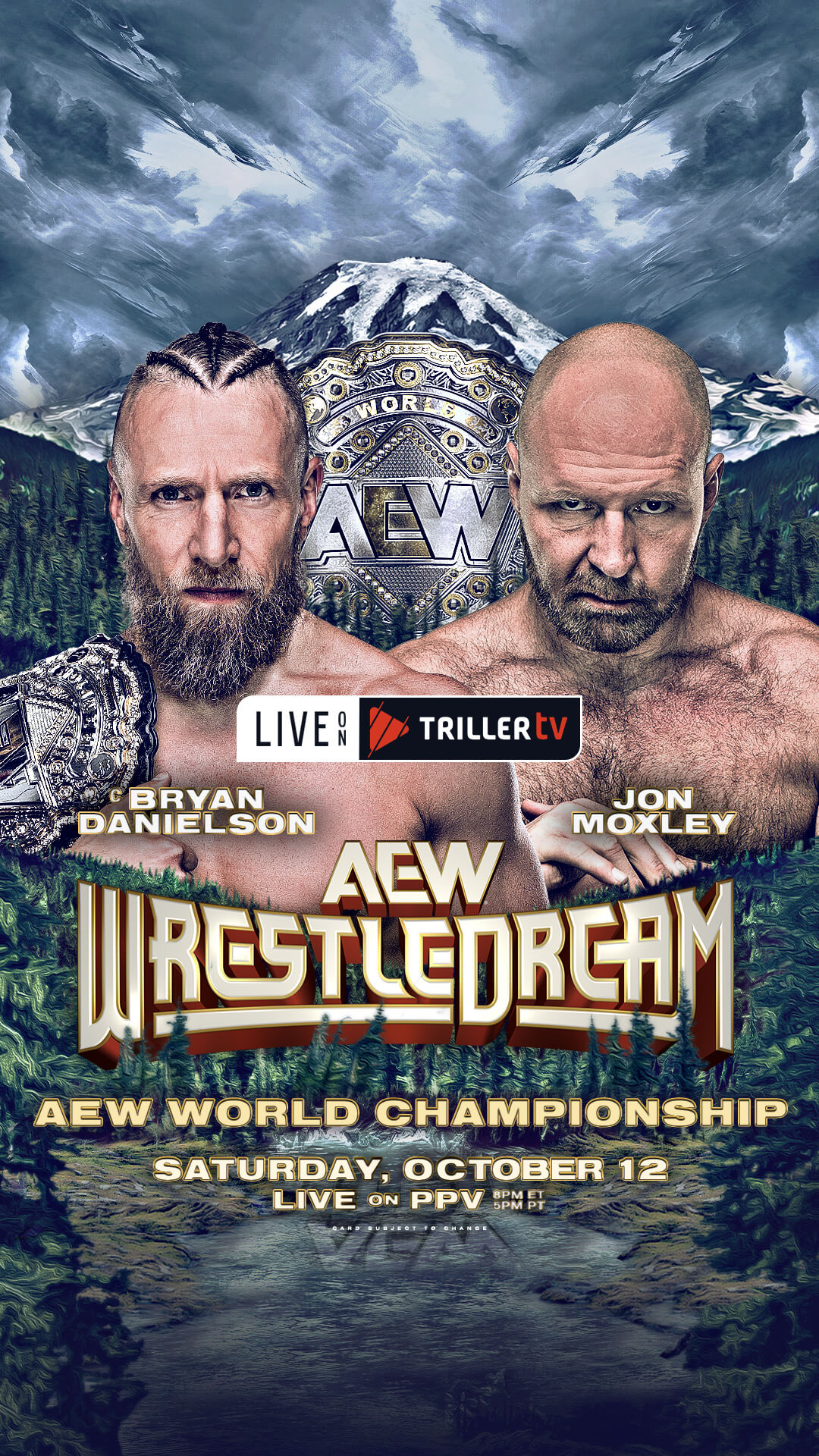Since its inception, AEW has been notable for its reliance on stables, factions and alliances as a way of maximizing the number of performers who appear on screen. Almost every wrestler under contract appears to be in some kind of alliance, from the bottom of the card (the Wingmen) to the top (the aptly named Elite, Pinnacle or Jericho Appreciation Society).
This makes certain performers who stand alone in their various feuds, unique.
Until recently these lone wolves included longstanding roster member Jon Moxley and more recent arrival Bryan Danielson. In February 2022, AEW programmed a feud between these two men, both multiple-time world champions. Mox was the babyface and Danielson the heel (following an excellent series of matches against the last two World champions, Kenny Omega and Adam Page). The feud was curious; it was a bloody affair based on the idea that Danielson wanted to align with Moxley and start his own group. Moxley wasn’t exactly opposed but needed to test Danielson’s mettle before he would agree. Following a brutal match that degenerated into a slugfest, the two men finally united when a debuting William Regal came out and forced them like a grade school recess monitor to shake hands, forming the Blackpool Combat Club (BCC).
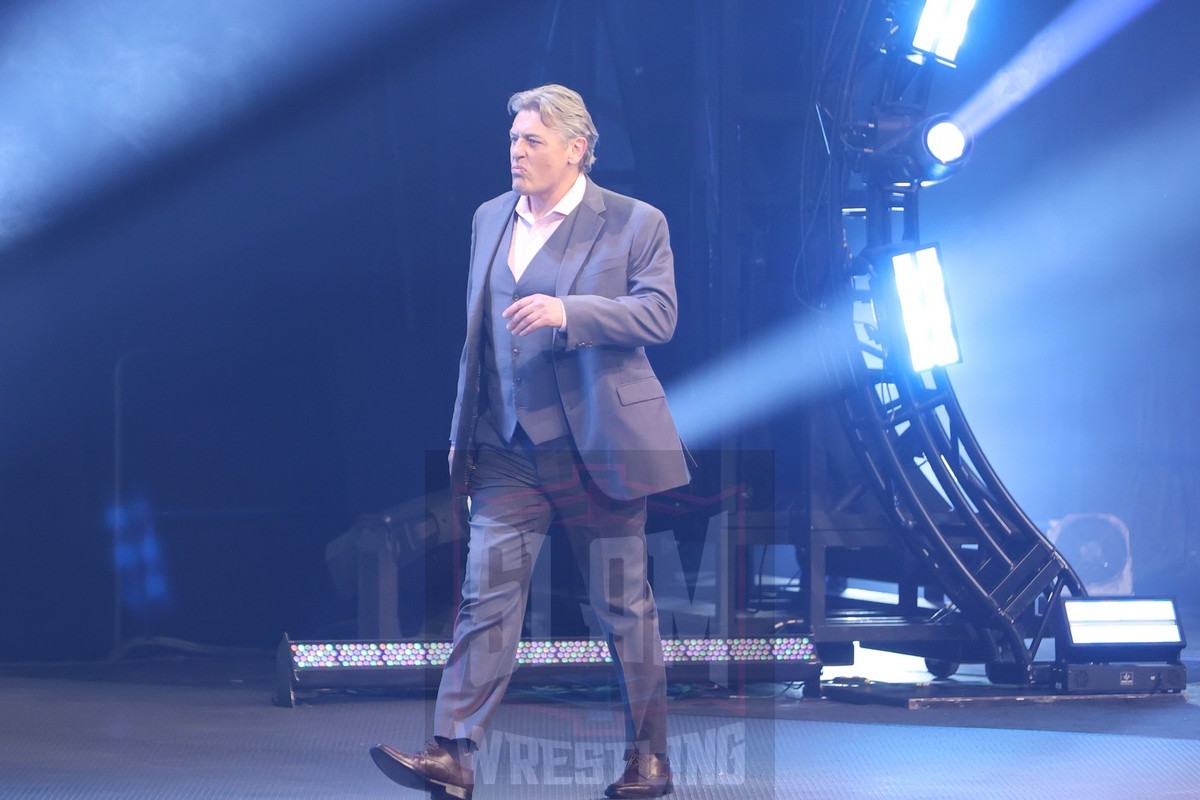
William Regal at the Liacouras Center, in Philadelphia, on Wednesday, April 27 2022. Photo by George Tahinos, https://georgetahinos.smugmug.com
Over the next few weeks, it has been a flurry of changes: 25-year-old Ring of Honor Pure champion Wheeler Yuta would be jumped into the group; most recently Danielson has been out of action with a feared concussion; the perennially underrated Claudio Castagnoli has joined the team; Moxley has brokered a loose alliance with frenemy Eddie Kingston and the tag team Proud-n-Powerful, themselves reprising their Impact Wrestling run as the Latin American Xchange; Ruby Soho has also become involved, somehow. In the meantime, Mox won the interim AEW World Championship, and is likely to hold it until lineal champion CM Punk returns from his own injury.
That’s a lot in five months. And while AEW seems committed to this group one fundamental question has yet to be answered: what exactly is Blackpool Combat Club?
I would argue the most successful stables or alliances had a few things in common.
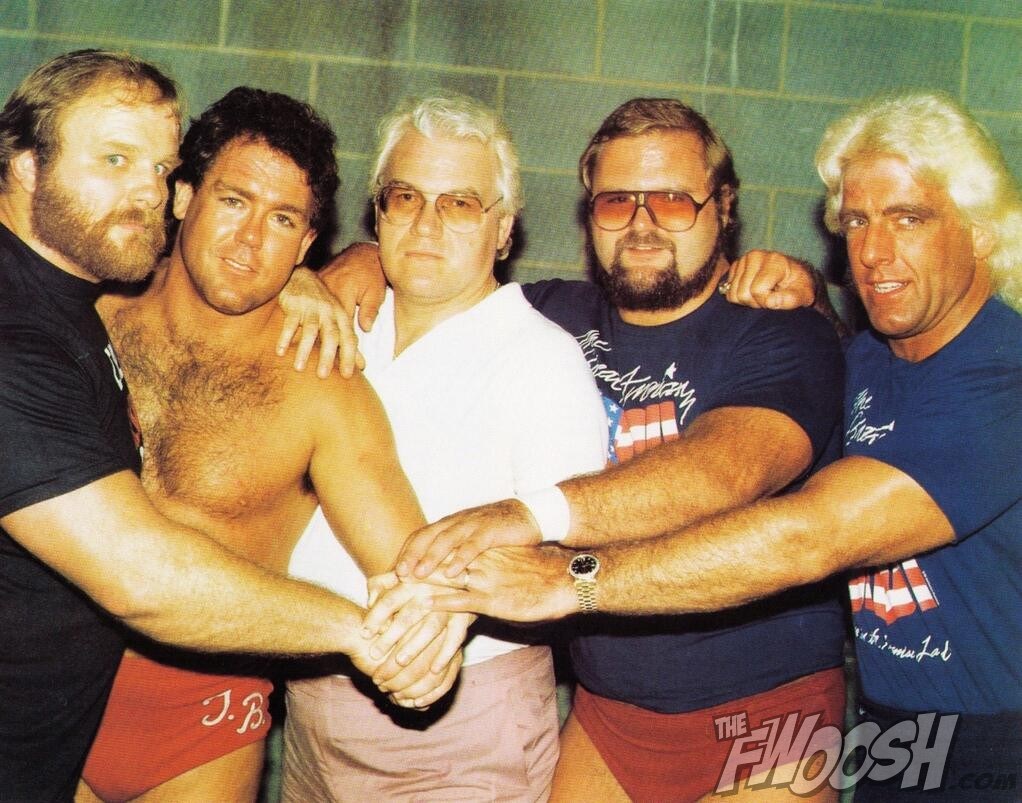
The original Four Horsemen were, from left, Ole Anderson, Tully Blanchard, JJ Dillon, Arn Anderson and Ric Flair.
First, within the universe of TV wrestling it helps when stables’ members hold a common world view. This could be based on familial (real or kayfabe loyalty a la Bloodline); nationality (used to great effect by the NWA’s Russian Team during the 1980s) or a common goal. That goal could be as simple as controlling the promotion’s titles, like the Four Horsemen, wreaking havoc against a conservative authority figure like Degeneration X or targeting a popular star or champion like the Alliance to End Hulkamania or the Heenan Family (Bobby Heenan was so good as Hogan’s antagonist that he crowed when Hogan finally turned heel in WCW that he had been right all along).
It’s not yet clear to me what BCC’s goal is. Their stated objective may be to bring up the next generation of wrestlers. So far they’ve mostly just elbowed the necks of enhancement talent in six-man matches. A recent feud with the Jericho Appreciation Society feels rushed, and already teases dissension between Kingston and Castagnoli (though they have history).
Good guy Moxley won a title that he could and has won by himself before. Yuta also holds a belt despite being seen as the ‘young boy’ of the group. A healthy Danielson makes more sense fighting against Moxley than alongside him and has noted himself that he still uses the ‘villains’ entryway. Castagnoli is a great fit and someone who needs a mouthpiece, but he is more suited as a Regal-style heel than a babyface (more on where BCC fits on the Good vs. Evil front later).
Second, these entities work best with some kind of visual continuity, a look or feel to their matches that sets them apart from other opponents. WWE exploited this in their 1990s midcards in their ‘Gang Warz’ storyline, where you had bikers vs. Boricuas vs. paramilitary vs. the Nation of Domination. Kevin Sullivan brought a design language to his Army of Darkness in Florida back in the early 1980s-face paint and long robes and creative hairstyles helped set the tone for his quasi-Satanic Panic. Sullivan would carry this through the Varsity Club where Mike Rotunda and Rick Steiner dressed in their alma maters’ singlets and lettermen jackets, later joined by Sooner Steve “Dr. Death” Williams and Dan Spivey who attended the University of Georgia. The nWo, which would encompass 45 members across its WCW and WWE incarnations, relied heavily on its black and white branding to establish visual cohesiveness. Merchandise sales suggest this approach works; it’s still being used by New Japan’s Bullet Club today as a way of tying together a visually disparate group of performers.
AEW knows how to do this. The Dark Order started as a masked cult in matching purple and black. Jericho weaves comically monochrome pleather outfits when his team fights as one. The Elite are merchandising machines. However, BCC is all over the map.
BCC may be cherry picking the ‘best’ for each kind of style. Moxley is a street fighter. Danielson plays an unhinged technical wrestling master. Both men have long histories of getting over on their own steam, and both are regarded as good-to-great talkers, which would normally mean they don’t need a hype man like Regal. Castagnoli is more of a pure wrestler and probably benefits most from inclusion in a faction, like Barry Windham or Bobby Eaton or Billy Gunn. He adds to a group without threatening to take it over. Yuta is most in line with the idea of training new talent, but it’s curious that so far he is the only member under 30 and without an extensive run elsewhere. I don’t know whether Kingston, Santana and Ortiz ‘count’ or not.
Alliances in AEW are fluid. Trent(?) Beretta shifts between his Best Friends and Roppongi Vice tag teams. Adam Page was teased as a member of the Dark Order but has only been loosely affiliated with them; recruiting members for six-man tag teams when he’s not hunting bigger game. Adam Cole (bay bay!!!) is variously a member of the Elite and the Undisputed Elite, whether he’s siding with the Young Bucks or Kyle O’Reilly and Bobby Fish — unless all five men are working together on a given night — or injured.
Third, you need continuity. Historically the agent of that continuity would often be a manager, who would provide a rotating series of heels to build up and challenge popular champions. Managers’ stables would often specialize: Classy Freddie Blassie introduced a series of vicious foreigners to challenge champs from Bruno to Hogan; Mr. Fuji spent much of his managerial career with walking nightmares like Demolition, the Powers of Pain, and other ‘savage’ types like the Berzerker or Sika and Kamala in their singles’ runs-or real monster heel Yokozuna; Bobby Heenan shone when he accompanied talent like Nick Bockwinkel, Ray Stevens, Curt Hennig or Rick Rude, although he also managed big men like King Kong Bundy or John Studd. With few exceptions (the Islanders, a brief dalliance with the Missing Link) the Heenan Family was positioned as the primary antagonist in 1980s WWF.
I love William Regal; even as a babyface he plays a self-aware villain — so much so that as a wrestler the word was inscribed on his trunks. He cuts excellent promos and despite his arrogance and rottenness he could still muster sympathy when paired with Tajiri or Eugene. His relationship to Bryan Danielson was well-explained; both are ring generals with sadistic streaks. His relationship to Moxley less so (although they did have history in NXT, but that could only be obliquely mentioned, and wrestling doesn’t like subtlety). Castagnoli got a soft open when Regal mentioned him in an interview before Blood and Guts. Regal is good at humor. He’s great at menace. Unfortunately he cannot wrestle anymore due to health issues so his threats feel slightly empty.
The central pairing of good guy Moxley and bad guy Danielson brings BCC to a morally grey point which makes it tough to know whether to cheer or boo them. Danielson may have effectively been turned face between that feud and now, but he still acts as a heel and as mentioned emerges from the bad guys’ entrance. If I were to guess based on their recent feud with Jericho and company I’d say BCC are faces, which places them on the wrong side of history. Conventional wrestling wisdom suggests that good guy factions don’t really work.
One of the central storylines in pro wrestling is the courageous loner defeating long odds. Hulk Hogan collected allies to set up betrayals leading up to the next supercard (see Paul Orndorff, Randy Savage or Brutus Beefcake). Hogan’s descent into heeldom was marked by the establishment of the New World Order and the acquisition of half the roster as running buddies. Bret Hart broke away from Jimmy Hart (no relation) and Jim Neidhart (yes relation) when he started his New Generation run as the face of the company. On turning heel he reconciled with his heel brother Owen, Neidhart, and added Davey Boy Smith and Brian Pillman to create a new Hart Foundation. Steve Austin somehow made a loner on the verge of sociopathy a fan favorite. His universally panned heel turn involved his absorption into the Alliance of WWE-owned WCW and ECW wrestlers under the McMahons’ thumb. The Rock (Nation of Domination, Corporation) and The Undertaker (Ministry of Darkness) also cemented heel turns by finding strength in numbers.
Babyface factions rarely last long or keep the audience engaged. There are exceptions which exist because the audience turns villains into heroes. I suspect this is because everyone loves a winner and where a faction is truly dominant it’s just easier to go with the flow. The Shield would be one example, and occasionally the Four Horsemen or Fabulous Freebirds or D-Generation X, all of which were so charismatic and such strong wrestlers that rooting against them just felt like fighting the inevitable. These groups’ fan favorite streaks only came up when booked against even more dastardly, newer heels and ended just as quickly once the threat was dispatched — usually by beating down a top babyface like Sting or Dusty Rhodes or Austin or John Cena.
Concerted efforts to band babyfaces together don’t work as well. WCW tried to counter the Four Horsemen with the Dudes with Attitudes (a name designed to get you to cheer for whoever’s mauling them; which has inexplicably been used since in WWE and AEW). The Dudes consisted of El Gigante, Lex Luger, Paul Orndorff, Rick Steiner, Scott Steiner, Sting and the Junkyard Dog, and were assembled in the run up to the 1990 Great American Bash. Apart from being padded with the likes of Orndorff (who would have made a great Horseman as a heel a few years earlier and would go on to form a solid team as a heel with Paul Roma), JYD and the dud that was El Gigante, the Dudes violated a key rule of wrestling storytelling. If faces had to come together to thwart the evil Four Horsemen, the bad guys still needed an advantage. Instead, there were seven good guys versus four bad, giving the babyfaces an unfair advantage and encouraging fans to discount the less prominent members even if, as in Gigante’s case, they were being pushed beyond their capabilities.
A few years later WWE would revisit the idea by bringing Mankind, Ken Shamrock, Test and the Big Show together as the Union (aka U.P.Y.O.U.R.S. or Union of People You Outta Respect, Son) to feud with the McMahon’s Corporate Ministry in 1999. A knee injury to Mankind and a storyline change of direction saw this faction disbanded in just over a month. Around the same time Al Snow led a group of enhancement talent including Bob Holly, Scorpio, the Blue Meanie and Gilberg as the JOB Squad. This team lasted longer than the Union but were less clearly defined as babyfaces. As their name suggests they also didn’t win very much and weren’t prominently featured.
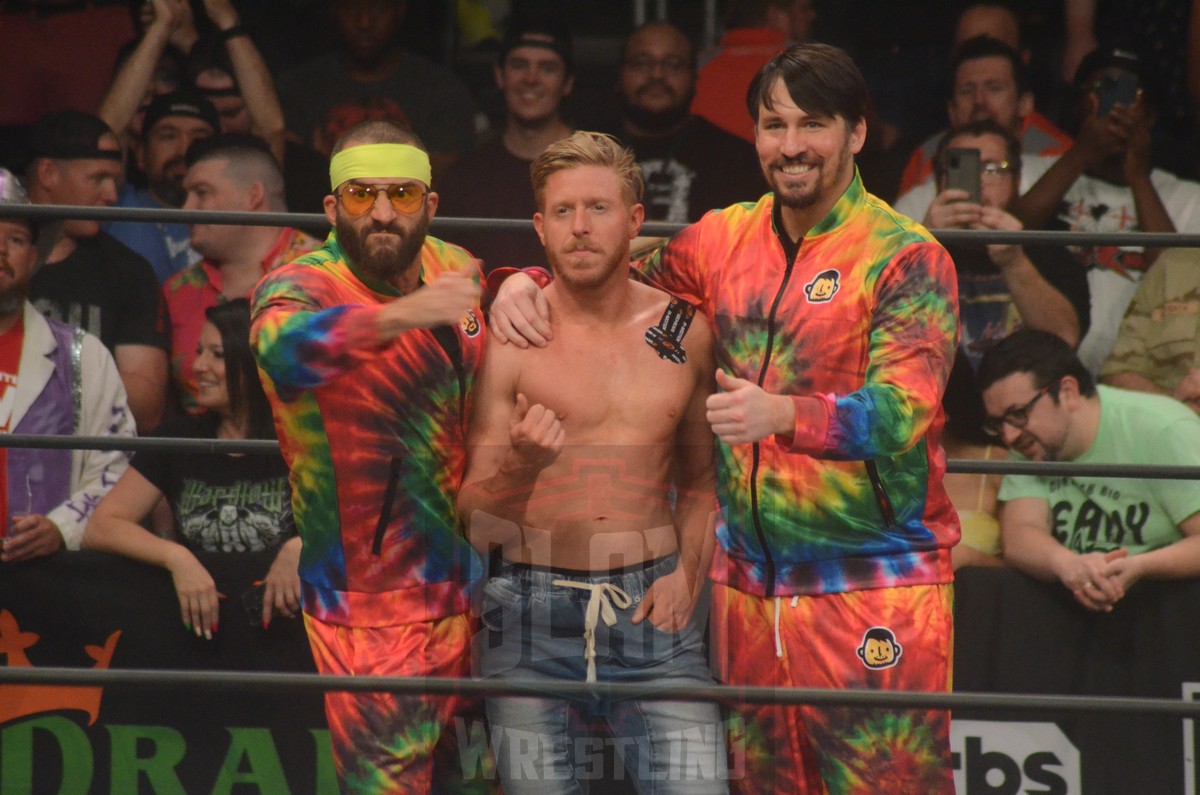
Best Friends at AEW Dynamite at the Little Caesars Arena in Detroit on June 29, 2022. Photo by Brad McFarlin
In AEW Best Friends and the Dark Order feature talented performers who seem lost in the AEW shuffle. Even bright spots like Orange Cassidy are more comedy-based gimmick performers. As part of these groups they are unlikely to make their way further up the card (much as I love that Danhausen). The Dark Order is a lost opportunity. With the arrival of Brodie Lee they were primed to be a monster, cultish heel stable. With Mr. Lee’s unfortunate passing they’ve largely been without direction; turned face en masse by an awful twist of fate, they’ve begun shedding members as contracts have come up. It’s clear that Tony Khan is unwilling to give up on them, as evidenced by a recent Evil Uno promo promising a rebuilt Dark Order, but it’s tough to see how they can be effectively rehabilitated as heels or who they would bring into the fold to revitalize them… but then that’s probably not the point.
All of which is to say that as stables, alliances or factions go, BCC leaves me confused. And as a wrestling fan I prefer not to be confused. I get that enough in ‘real life.’
TOP PHOTO: Bryan Danielson, Wheeler Yuta and Jon Moxley on May 4, 2022, in Baltimore, Maryland. Photo by George Tahinos, https://georgetahinos.smugmug.com
RELATED LINKS
